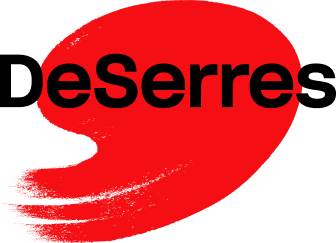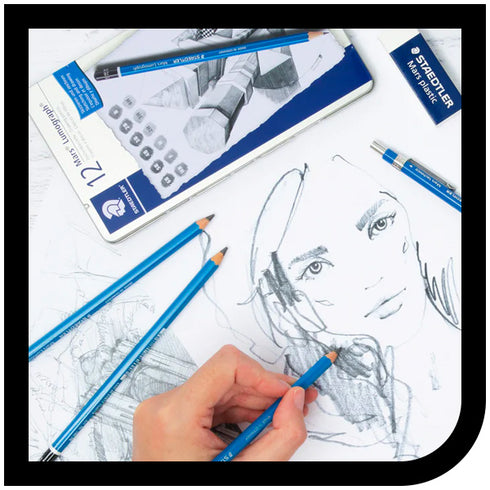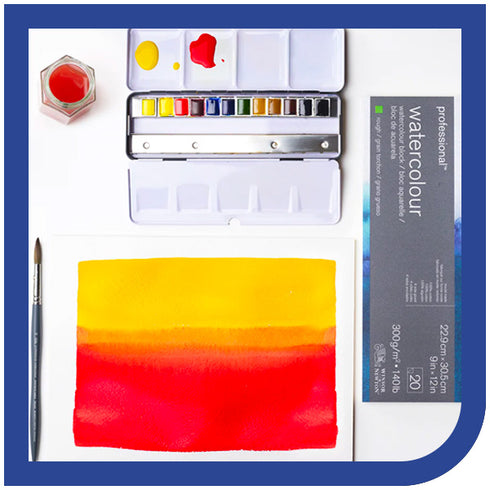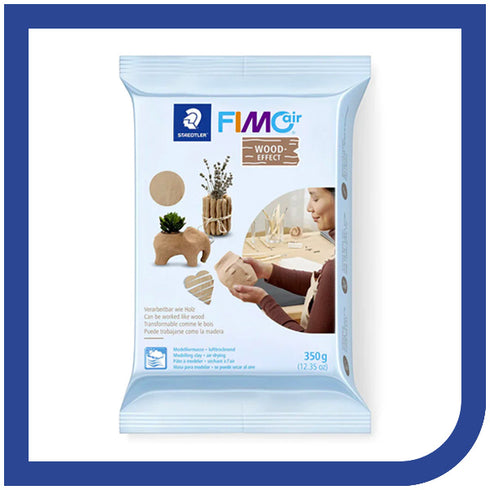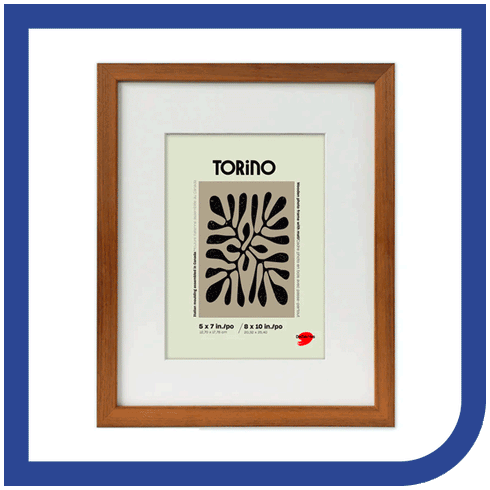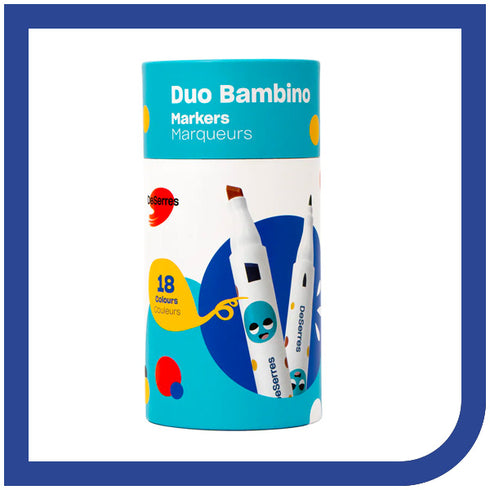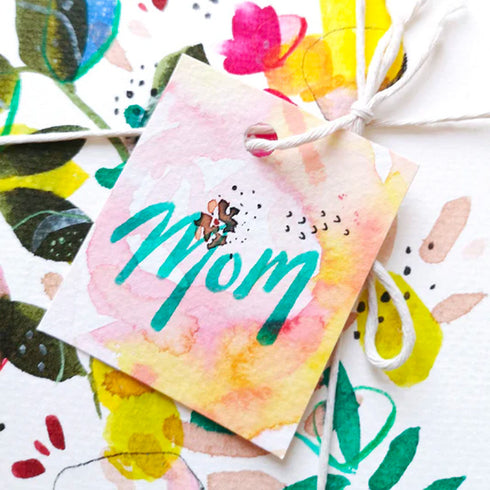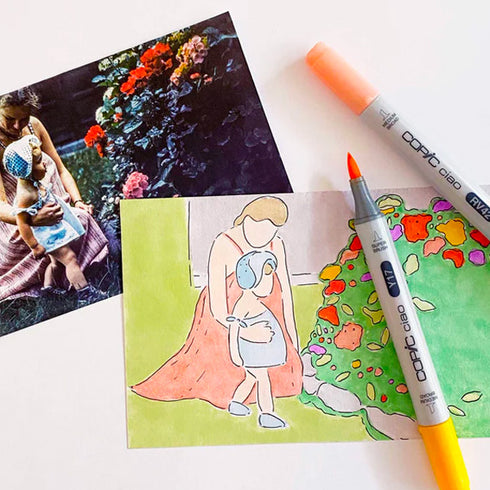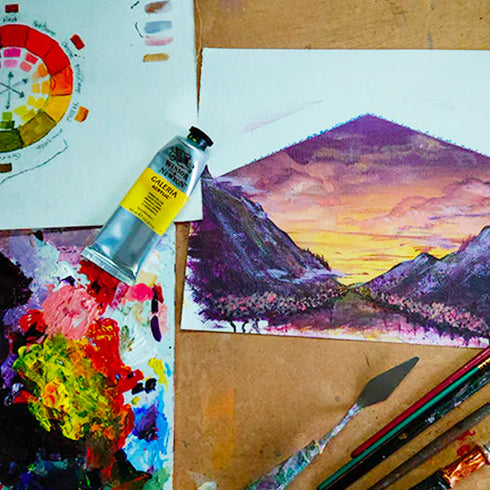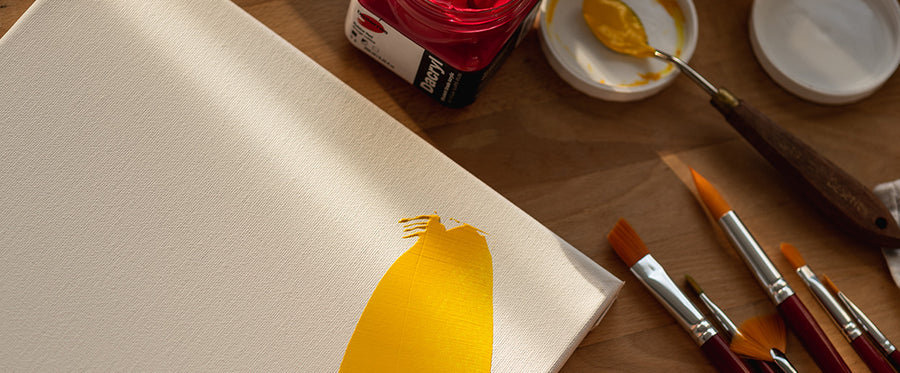Feel free to explore different paper types and experiment on your own in order to find your go-to. We can't say it enough: testing is key!
General information on paper
Weight
Paper weight is measured in grams per square metre of paper. Thinner papers weigh less, and thicker papers weigh more. It’s important to remember that heavier weight papers will be more resistant to repeated erasing and material applications.
For wet techniques, we generally recommend a fairly heavyweight paper (300 g/140 lb), and for dry techniques, a paper weighing between 80 g and 225 g.
Texture
Paper texture is characterized by grain. Grain measures the smoothness or roughness of a paper.
A fine or satin grain produces a smoother paper, which is more suitable for detailed, precise techniques. This is the most used texture.
A coarse or rough grain produces a more pronounced surface texture, which is better suited for relief or fragmented techniques, as it will be difficult to fill in the paper’s grooves depending on the technique.
Substrate
As you know, there are several types of substrates.
First, you have paper pads with sheets that are already stretched and glued on one or more sides. Pads are great for getting started on a project right away.
You then have loose sheets, which are cheaper and allow for larger projects.
Choosing paper for different techniques
Watercolour paper

Watercolour paper comes in many varieties. You can choose between several textures, compositions and weights.
Here are the three types: hot-pressed, cold-pressed and rough.
Hot-pressed paper (also known as satin grain) has a smooth surface that leaves little room for error. It’s suitable for pencil work and more detailed illustrations. This is the finest grain.
Cold-pressed paper (also known as fine grain) has a light texture and is more suitable for wet-on-wet techniques. It falls somewhere between the two previous choices. We recommend this type of texture for beginners.
Rough paper, which has a very pronounced texture, is used for landscapes or abstract art. It’s perfect for highlighting the weave of the paper.
When it comes to paper composition, there are two types: cotton and cellulose. Cotton is more absorbent than cellulose fibres, and is of better quality. Professionals normally work with 100% cotton papers. However, some papers offer mixed compositions, such as the DeSerres paper pad, which is an excellent value for money.
For watercolour, we recommend using a 300 g /140 lb paper (most used weight), as it will absorb more water without warping.
Gouache can also be used on all watercolour papers.
Click here for more tips from our watercolour expert, Marie-Hélène.
Drawing paper

Bristol paper has a smooth surface. It’s a go-to for drawing, pencils lines will not be obstructed by the fine paper grain. We recommend it for drawing with pencil or graphite, as these greasier materials will spread more easily.
Acid-free paper is better for preserving your sketches. You should also choose a lightly textured and resistant paper so you can erase easily.
When using ink or pen, your paper should be very smooth – again, Bristol paper is a good option. Click here for our full article on choosing the right paper with inks.
If you’re using charcoal, opt for a medium grain so that the charcoal can easily penetrate the paper.
Finally, if you’re using markers, layout or mixed media papers will help ink penetrate and limit smudging.
For more information on choosing the right paper for marker techniques, click here.
Pastel paper

In general, pastel papers have more tooth so that pastels can better grip onto the surface.
For dry mediums, Canson Half-Tone Paper is a good option, as it has two different sides: a smooth side and a more textured, honeycomb side. Cork grained pastel paper holds soft pastel colours in place – we recommend it for blurred techniques, but not for fine detailing.
For greasy mediums, such as oil pastels, papers designed for oil painting will ensure that your work lasts over time.
Lastly, colour may also affect your choice of paper, as pastels do not offer full coverage – coloured substrates will add the perfect final touch to your work.
Oil or acrylic painting paper

These papers feature a medium to thick texture.
Acrylic paper is generally thicker and heavier, and its surface is textured to accentuate acrylic paints. For acrylic painting, we recommend using paper that is specially designed for acrylic colours, but you could also try watercolour paper. Of course, you can also use canvas, cardboard, or even wood panels for a smoother working surface.
As for oil painting, opt for an acid-free paper, which will offer excellent longevity. Choose a medium-weight paper (approx. 260 g/m2) so that you can easily use impasto techniques.
If you opt for a paper that is not acid-free, you should apply gesso on the front and back before painting.
Finally, if you plan on using several techniques in your art project, opt for mixed media pads – they’ll have a weight of approximately 160 g/m2, which will give you the perfect density!

